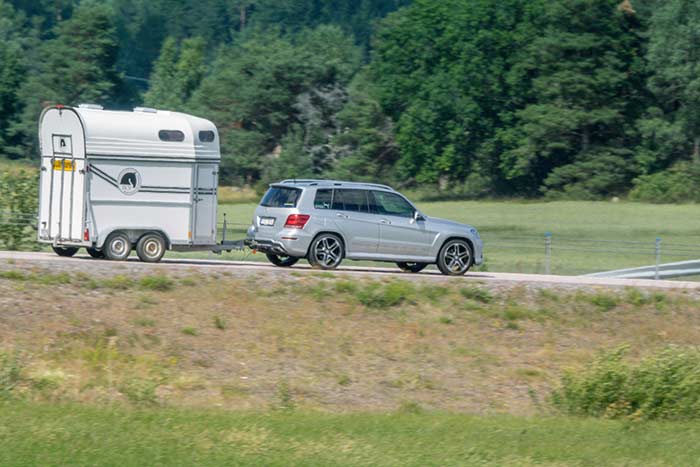
A horse float is heavy load which will seriously affect the performance of your towing vehicle.Even you are experienced at towing a normal trailer, a horse float can be much more difficult – it contains several hundred kilos of unstable, top-heavy mass that can move around and it make driving a challenge. At Safe T Tyre, we are an Australian owned, wholesale supplier of top-quality tyre pressure monitoring systems (TPMS). Towing a moving load requires extra care, here’s a few handy tips you can follow to ensure your safety and that of you horse while in transit.
Before Driving
Whether you are travelling a long distance or just transporting a horse close by, there’s a few checks you should undertake before you head off:
- Check the tyre pressure of your vehicle – installing a TPMS will ensure your tyres are always at the correct pressure
- Check your towbar is rated to tow the weight of the float
- Most horse floats have electric braking systems, check these are set up properly for the weight
- Check the horse float is roadworthy and tyres properly inflated
- Check all lights work
- Check safety chains are properly connected
- Ensure the float being used is suitable for the horses being transported, ensure you never overload your float
While Driving
A horse float is wider than most vehicles and this, plus the extra length makes towing a float a skill that takes some time to master. Several factors can impact he comfort of safety of horses in transit, this is mostly to do with their ability to retain balance.
Taking Corners
It’s important to keep in mind the load is top-heavy and constantly shifting so reduce your speed well in advance before corners or bends. A good rule of thumb to follow is, take a corner at 10kph under any advisory speed. Advisory speeds are marked with a yellow and black sign and the direction of the turn. At T-intersections, take the time and space you need, then accelerate very gently into the road. Wait until the car and trailer are in a straight line until you apply more acceleration. Roundabouts should also be taken with extra care, as they are often sloped, the turn can be even more challenging.
Following Distances and Braking
Due to the weight of the trailer, it will take you further to stop than usual. Keep a safe distance to allow plenty of room to brake when needed. Four seconds in the dry is the minimum required in case you need to brake suddenly. Make sure you start slowing down well before you need to in order to give the horse time to adjust its weight and stance. Braking should always be smooth and gentle right up until the float stops.
Reversing
When reversing, have someone outside the vehicle to guide you, keep your car windows open so you can communicate, and agree on some basic hand signals. Using your door mirrors to see, hold the bottom of the steering wheel, when you see more of the float in one mirror than the other, gently turn the steering wheel towards that mirror.
Handling Sway
A horse float can sometimes start swaying from side to side, in this situation you should only brake if you have to. Instead, you should take your foot off the accelerator slowly or speed up a little. If you can apply the float brakes separately then do so, this should stop the sway.
Other General Tips
- When pulling out of a driveway, go very slow as a gutter or kerb can upset a horse’s balance.
- Change into a low gear prior to a steep downhill – this will give you greater control and prevent the brakes from overheating.
- Avoid sudden lane changes and changes of direction.
- Take regular rest stops both for you and the horse, this will keep you more alert and therefore safer for all.
If you are thinking of purchasing a horse float to tow your horse, the above tips will help prepare to prepare you.
At Safe T Tyre, your safety is our number one priority. We believe that a quality tyre pressure monitor (TPMS) should be part of every driver’s inventory and safety equipment, especially those drivers who regularly tow loads of any size. Call our friendly team today on 1800 876 700 or contact us online to find out more about our comprehensive TPMS range.

